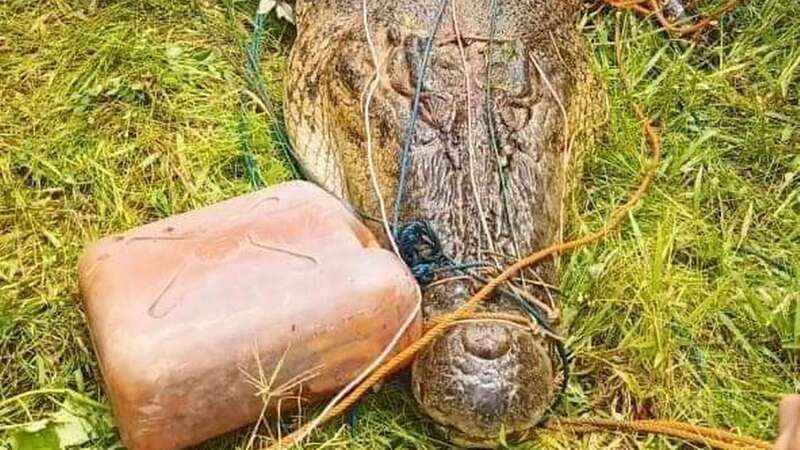
Huge crocodiles stalk humans - including children - for food across Indonesia as officials struggle to address the dangerous situation.
The violent, big-toothed reptiles have killed hundreds of people across the Republic of Indonesia in the last decade. Hundreds more have also been attacked, albeit not fatally in the same timeframe.
The saltwater crocs there have a bite force of 3,700 pounds per square inch - and can easily tear off limbs. A teenage boy became a victim last year when he was beheaded and torn apart while fishing with his pals at a lake. Farjan Idham's body was recovered days later - after the bloodthirsty crocs patrolled his mutilated corpse, blocking rescuers from retrieving the lad.
 Devi Binti Sulaiman was attacked while she was cooling off with friends (ViralPress)
Devi Binti Sulaiman was attacked while she was cooling off with friends (ViralPress)And an eight-year-old boy's body was cut out of one of the 26ft-long beasts' stomach after the animal swallowed the child whole in front of his dad. Dimas Saputra was dragged into murky water as his dad frantically swam after the huge reptile, say reports.
Devi Binti Sulaiman, 17, was mauled while she was cooling off with friends near the Sebamban River in South Kalimantan in another horror. The croc - who had no teeth - was still able to swallow the girl whole with its massive jaws.
 Man fined £165 after outraging the internet by dying puppy to look like Pikachu
Man fined £165 after outraging the internet by dying puppy to look like Pikachu
But Indonesian authorities can't legally cull the beasts as they're protected. The laws don't stop furious locals from killing the beasts in revenge for slaughtering their family and friends, though, and this is happening frequently, reports suggest.
 Residents in a village wrangle with a reptile after it bit an eight-year-old boy (viralpress.com)
Residents in a village wrangle with a reptile after it bit an eight-year-old boy (viralpress.com)In 2018, a crocodile killed an Indonesian man so his village slaughtered 300 of the predators in a bloody revenge. One croc, nicknamed "The Demon" due to its stunning 4.5metre body weighing 2,000 pounds was beheaded after terrorising locals for half a century.
Male saltwater crocs can weigh up to 2,000 pounds, while females weigh in around 300. They're the biggest reptiles in the world, have nearly 70 razor sharp teeth and can live up to 70 years. They can reach speeds of up to six miles per hour in the water and some have been documented reaching speeds of 12 miles per hour on land. Locals have also been urged people to bathe and wash their clothes in clear, shallow waters to avoid an attack.
Read more similar news:
Comments:
comments powered by Disqus

































